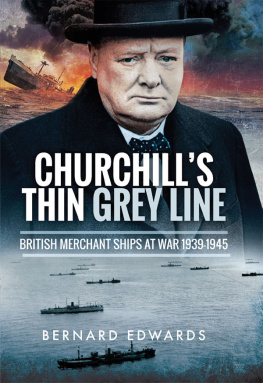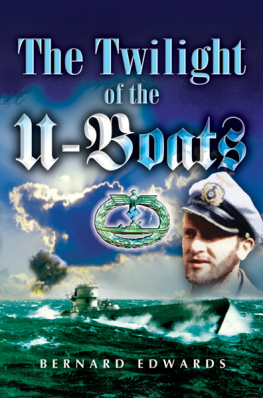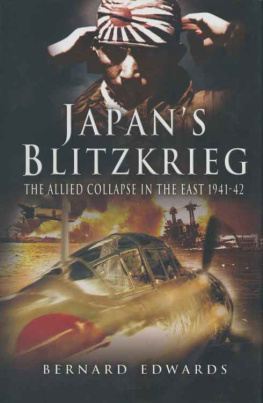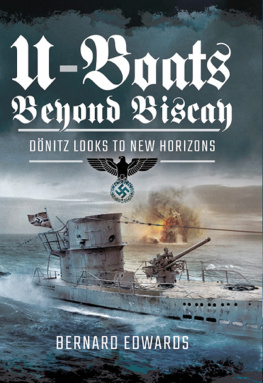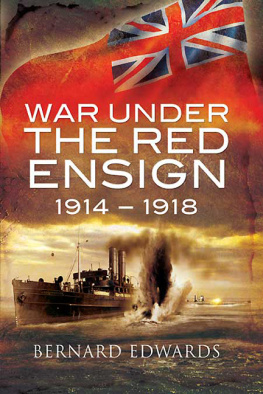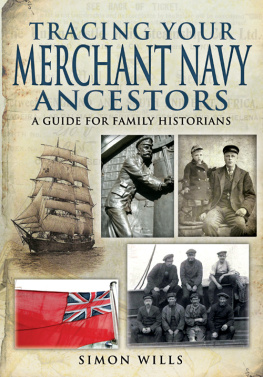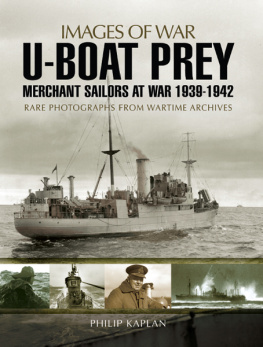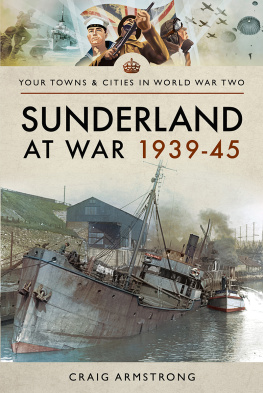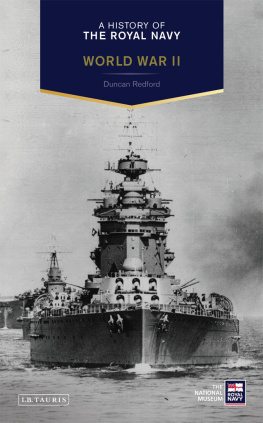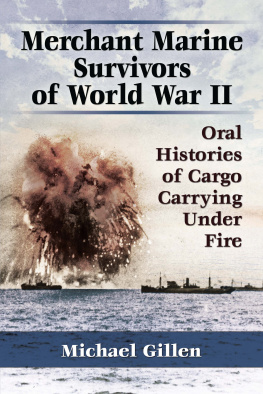Churchills Thin Grey Line
Other Books by Bernard Edwards
Masters Next to God
They Sank the Red Dragon
The Fighting Tramps
The Grey Widow Maker
Blood and Bushido
SOS Men Against the Sea
Salvo!
Attack and Sink
Dnitz and the Wolf Packs
Return of the Coffin Ships
Beware Raiders!
The Road to Russia
The Quiet Heroes
The Twilight of the U-boats
Beware the Grey Widow Maker
Death in the Doldrums
Japans Blitzkrieg
War of the U-boats
Royal Navy Versus the Slave Traders
The Cruel Sea Retold
War under the Red Ensign 1914-1918
The Wolf Packs Gather
Convoy Will Scatter
The Decoys
U-boats Beyond Biscay
Churchills Thin Grey Line
British Merchant Ships at War 19391945
Bernard Edwards
First published in Great Britain in 2017 by
PEN & SWORD MARITIME
an imprint of
Pen & Sword Books Ltd
47 Church Street
Barnsley South Yorkshire
S70 2AS
Copyright Bernard Edwards, 2017
ISBN 978 1 52671 166 3
eISBN 978 1 52671 168 7
Mobi ISBN 978 1 52671 167 0
The right of Bernard Edwards to be identified as Author of this work has been asserted by him in accordance with the Copyright, Designs and Patents Act 1988.
A CIP catalogue record for this book is
available from the British Library.
All rights reserved. No part of this book may be reproduced or transmitted in any form or by any means, electronic or mechanical including photocopying, recording or by any information storage and retrieval system, without permission from the Publisher in writing.
Pen & Sword Books Ltd incorporates the Imprints of Pen & Sword Archaeology, Atlas, Aviation, Battleground, Discovery, Family History, History, Maritime, Military, Naval, Politics, Railways, Select, Transport, True Crime, Fiction, Frontline Books, Leo Cooper, Praetorian Press, Seaforth Publishing, Wharncliffe and White Owl.
For a complete list of Pen & Sword titles please contact
PEN & SWORD BOOKS LIMITED
47 Church Street, Barnsley, South Yorkshire, S70 2AS, England
E-mail:
Website: www.pen-and-sword.co.uk
This is for the many who died forgotten in the fog of war
There was no field for gestures or sensations; only the slow, cold drawing of lines on charts, which showed potential strangulation. Compared with this there was no value in brave armies ready to leap upon the invader, or in a good plan for desert warfare. The high and faithful spirit of the people counted for nought in this bleak domain. Either the food, supplies, and arms from the New World and from the British Empire arrived across the oceans, or they all failed.
Winston Churchill
Preface
The first British casualties of the Second World War occurred on Sunday, 3 September 1939, just nine hours after the conflict opened. They came not from the fighting forces, the Royal Navy, the Army or the Royal Air Force; they were British merchant seamen serving under the Red Ensign in the cargo/passenger liner Athenia , torpedoed without warning by U-30 some 200 miles west of Ireland. When the torpedoes struck, two men were killed in her engine room; seventeen other crew members gave their lives to save their passengers.
From that day onwards, until the war ended on 15 August 1945 with the dropping of atom bombs on Hiroshima and Nagasaki, Britains merchant seamen were in the front line, bringing in the food, fuel and military equipment that saved their country from being crushed under the heel of Hitlers Wehrmacht. In doing so, many of them paid the supreme sacrifice. Figures released by the Registrar of Shipping and Seamen reveal that 2,535 British ocean-going merchant ships were lost in the six-year-long war, and of the 185,000 men and women serving in the British Merchant Navy at the time 36,749 lost their lives, 4,707 others were wounded, and 5,720 ended up in German and Japanese prisoner of war camps. This was a casualty rate of 25 per cent, second only to that suffered by RAF Bomber Command.
This book tells the story of some of those brave seamen, volunteers all, who manned the thin line of grey-painted ships that stretched from horizon to horizon, keeping Britains vital sea lanes open in the face of a determined and ruthless enemy. Men who, when given the opportunity, fought to defend their ships and the cargoes they carried. Even today, more than seventy years since it all ended, this country is still heavily in their debt.
CHAPTER ONE
Curtain Up Athenia 03.09.39
The Athenia sailed out of Liverpool at 4 oclock on the afternoon of Saturday, 2 September 1939. As she steamed slowly down the River Mersey, her passengers were gathered on deck enjoying the late summer sun, their backs to the dark clouds gathering in the east. War with Germany was then imminent, yet the Athenia sailed alone and unarmed. Twenty-four hours later she was sinking, her bottom cruelly ripped open by a German torpedo. The curtain had risen on the Battle of the Atlantic, and it would not fall again for six long, bloody years.
The 13,581-ton Athenia , built in 1923 and owned by the Donaldson Atlantic Line of Glasgow, was typical of the medium-sized cargo/passenger liners employed on the North Atlantic run in the days before air travel became available to all. Powered by six steam turbines driving twin screws, she had a service speed of 15 knots, giving her a passage time between Liverpool and Montreal of eight days in average weather. She could never hope to match the big liners in opulence or despatch, but for those on a limited budget and with time to spare she offered good value for money.
On the Athenias current voyage she had on board 500 Jewish refugees, 311 Americans and 469 Canadians, all anxious to quit Europe ahead of the threatened conflict. She also carried 72 British nationals, some of whom were escaping to more peaceful climes before the balloon went up. Jesse Bigelow, who was returning to Canada with her husband and two children, described the situation:
Our holidays were not over for another week but I talked my husband into getting an earlier booking on the Athenia . There were crowds of people with the same idea and it took hours of standing in line before we managed to get a small cabin on D-deck, down in the bowels of the ship. This turned out to be two berths on one side and two on the other but no room for trunks or baggage, which were left outside the door I found out that they had to arrange for the accommodation of 200 passengers above the normal total. Temporary bunks were erected here and there and I believe the ships gymnasium became a dormitory.
Captain James Cook, commanding the Athenia , viewed the coming voyage as just another routine crossing. Prior to sailing, he had been warned of possible dangers en route, but nobody, not even the Admiralty, seriously considered the liner would be attacked. Available intelligence indicated that no German submarines had yet left port. In fact, unknown to the Admiralty, Rear Admiral Dnitz, C-in-C U-boats, had moved his headquarters from the Baltic to Wilhelmshaven and in August had ordered his U-boats to take up strategic positions in the North Sea and the Western Approaches. As the sun dropped towards the horizon and the Athenia closed the Bar light vessel to drop her pilot, Hitler already had a ring of steel around the British Isles.
One link in that ring was U-30, commanded by 26-year-old Oberleutnant zur See Fritz-Julius Lemp. U-30 was a 745-ton Type VIIA ocean-going submarine, built in 1936 under Hitlers secret rearmament programme known as Plan Z but only now emerging for her maiden voyage. She was equipped with two 6-cylinder MAN diesels and two Brown Boveri electric motors, giving her speeds of 17 knots on the surface and 8 knots submerged, plus a range of 6,200 miles at 10 knots. Her armament consisted of five 21-inch torpedo tubes, four in the bows and one in the stern, with eleven torpedoes, an 88mm deck gun with 220 rounds, and a 20mm anti-aircraft cannon. U-30 had sharp teeth.

